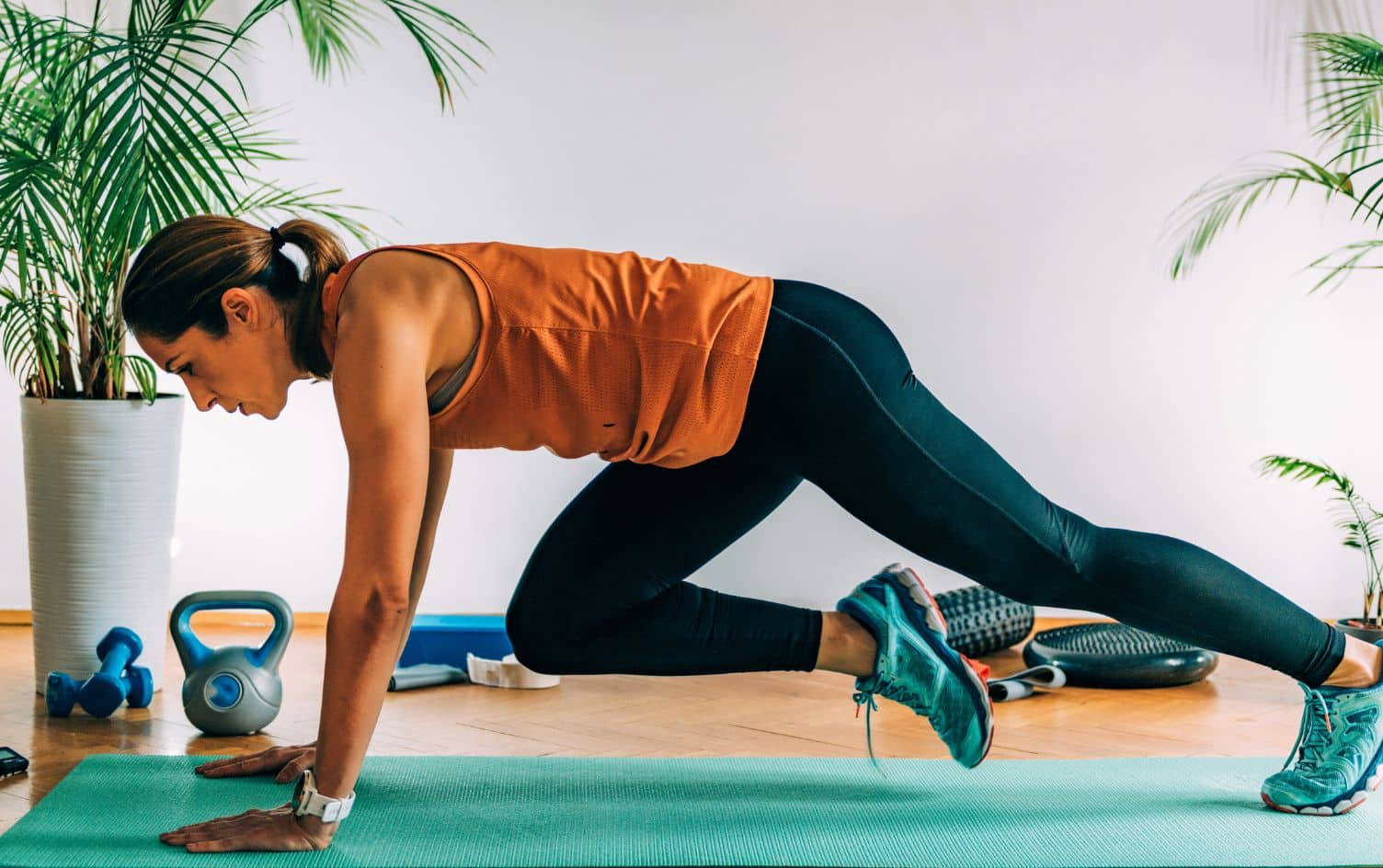Working hard at strength training or yoga are both enormously advantageous to your fitness, but there’s another workout that maximizes results and is undeniably fun. Jumping and other exercises like plyometrics, jump rope and parkour can bring major benefits — without adding much time to your workout schedule.
“The goal is to train at maximum effort for a short amount of time with explosive movements, giving you the most bang for your buck,” says Sloane Davis, certified nutritionist, personal trainer and founder of the blog Pancakes and Pushups. Not only does jumping benefit leg and core muscles, but you also boost endurance and torch calories, she adds.
PLYOMETRIC DRILLS
Our muscular systems are made of fast-twitch and slow-twitch muscle fibers, and both types play a role in everyday functioning. Fast-twitch are the kind that give you reactive strength — for example, allowing you to sprint faster or get more power for shooting a basketball.
Fast-twitch fibers are the largest and strongest in the body, Davis says, and they’re best trained through explosive movements that fatigue them quickly. Plyometrics were designed for just that purpose. They incorporate movements like box jumps, burpees and jump squats.
READ MORE > HOW TO MASTER BOX JUMPS
PARKOUR
First developed as obstacle-based military training, parkour is now a quasi-sport that is sometimes called “free running.” According to the World Freerunning Parkour Federation, the sport is the act of moving from one point to another using obstacles in your path to increase your efficiency.
Think of nearly any action movie sequence involving a chase: You’ll see people fighting, but also vaulting, jumping, flipping and sprinting over obstacles like rooftops, garbage cans, couches, cars — anything in their path. In many ways, that’s parkour.
You don’t need to get cinematic to emulate the sport, though. You just need to incorporate different kinds of jumps into your routine. For example, instead of jumping directly over a low bench, you could try vaulting to the side of it and then rolling after you land to soften the impact.
READ MORE > WHY EVERY RUNNER SHOULD TRY PARKOUR
JUMP ROPE
Deceptively simple, jump rope can actually turn into a mental endurance game once you go for longer than a few minutes. But it’s worth the effort, because this easy exercise yields mega benefits. There’s a reason boxers love it so much.
According to Dr. Peter Schulman, associate professor of cardiology and pulmonary medicine at the University of Connecticut Health Center, jumping rope is good for the heart, but also has other advantages. He notes that it strengthens both the upper and lower body, and it burns a ton of calories in a short time.
In terms of form, stay high on your toes rather than coming down on your heels, since that will minimize the impact. Also, make sure the rope is the right size for you — the handles should reach your armpits if you’re stepping on the rope.
READ MORE > NASA, THE TRAMPOLINE AND YOU
GETTING STARTED
If you don’t have a sturdy box for plyometrics, a jump rope or a parkour course, that’s no problem, according to Davis.
“The great thing about jumping exercises is that you can basically do them anywhere because they are mostly bodyweight exercises,” she says. “You can use what’s available to you, from a park bench outside to an ottoman at home.” Options like burpees or jump squats don’t require even those, since you can do them anywhere.
Davis recommends warming up by jumping rope for 5 minutes, and then incorporating these jumpstyle movements into your workout routine for 1 minute each: mountain climbers, high-knee jumps, jumping jacks, football shuffle, skaters, burpees and jump squats.
Be particularly conscious of how you land, too, adds Jeffrey Yellin, a doctor of physical therapy and regional director of Professional Physical Therapy in New York. Landing needs to be done in a way that allows the muscles to slow the motion instead of the joints. The best technique is to sit back into a semi-squat position on landing, he advises. Using arm swings for momentum can also be helpful.
“Once you feel comfortable with both jumping and landing, then you can increase intensity,” he says. “Just make sure that you always feel in control and that you advance gradually. But really, any amount of jumping helps to improve reactive strength.”




